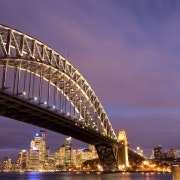How we can dodge a $40 billion energy waste
So many billions of dollars are being invested over the next few years in expanding Australia's electricity networks – $40 billion-plus over five years, or around 150 million bucks a week, every week – that you can understand it's hard for us in the energy efficiency sector not to just occasionally feel a mite disheartened.
After all, this colossal investment, public and private but mostly public, is actually being driven by governments both state and federal. The same governments that sound so concerned about how excessive network investment is driving up the cost of electricity are the very same people who have either approved that investment directly, because the networks are state-owned, or they're the people who set the rules that the networks are working within.
These are the same governments and oppositions promoting our national carbon reduction target of 5 per cent by 2020 while also supporting investment in network capacity mostly for electricity demand growth that isn't happening – as regular Climate Spectator readers will know.
Yes, this can be disheartening.
But for a few happy moments, let's celebrate. Today I bring a tale of energy efficiency and demand management from an unexpected quarter, a bowling club in south-western Sydney, one that in a modest way has shown how demand management works, saving one business money, avoiding an unnecessary supply upgrade investment, and cutting carbon emissions.
Here's one community organisation that in its own decisions has changed the paradigm for a building services upgrade.
This is the story of the Dooleys Regents Park Sports Club, a bowling club with two bowling greens, a bar, a TAB, a bistro and a few dozen poker machines that has become a case study in cost-effective demand management. The new club was opened last Wednesday by the NSW Minister for Sport and Recreation, Graham Annesley.
Two years ago the then Regents Park Bowling Club was taken over by Dooleys Lidcombe Catholic Club, one of NSW's largest clubs, a few kilometres to the north of Regents Park. The Regents Park Bowling Club was going broke, but Dooleys came to the rescue.
Because the Bowling Club had been teetering on bankruptcy for years, the building structure and its building services were in a bad way. The air conditioning was run down, with many of the rooftop units inoperable. The roof was rusty and the lighting was bleak, largely fluorescent tubes.
In its initial review of the club and what was needed for the upgrade, Dooleys realised it would need to wholly replace the air conditioning. But in doing so, it became clear that if this were to happen, the club's power supply would need to be upgraded.
Unlike Australia's supply-focussed governments, Dooleys looked at the options from both sides of the electricity meter, supply and demand. Rather than install conventional air conditioning that would require the club's supply to be augmented, Dooleys did the analysis for fuel switching to gas-driven air conditioning.
The quote for the supply upgrade was $183,500. Rather than spend that, Dooleys jumped outside the normal club refurbishment paradigm and looked at the alternative of cutting electricity demand by switching to gas cooling. It made sense. The club bought a Yanmar gas-driven heat pump through the Australian distributor, Origin Energy. That cost around $80,000, fully installed.
As well, of course, gas-driven air conditioning is far lower in carbon emissions than electric derived from coal.
The club went further. The roof is now a cool roof, having been painted with a solar reflective paint that not only will keep the club cooler in summer, it will also protect the roof, delaying the need for an expensive new roof.
And on that roof, a 12.7kw PV system, installed by CBD Solar, further cuts the club's consumption from the network.
Not one low-voltage downlight has been installed. The club is lit largely by LED downlights, throughout, all 350 of them. And the north-facing windows, which overlook the two bowling greens, have had solar film installed to, again, reduce the heatloads. By next summer, new awnings will also be in place.
Dooleys CEO David Mantle says the Regents Park Sports Club had been losing money for years and his priority was to make an investment that would return the club to profitability, while demonstrating Dooleys' commitment to the community it serves.
“The new Regents Park Sports Club isn't designed to be an iconic green building,” Mantle says. “But we did want to make investment decisions that made sense for our business while at the same time demonstrating the Dooleys Group's commitment to environmental sustainability, and to best-practice building management.
“We've done things that are good for our business and good for cutting carbon emissions while providing a modern, attractive new facility for the Regents Park community. Overall, we'd like to think what we've done has been in the interest of our business and the community.”
Gavin Gilchrist heads energy efficiency firm Big Switch Projects, who advised Dooleys on the Regents Park Sports Club refurbishment.
















